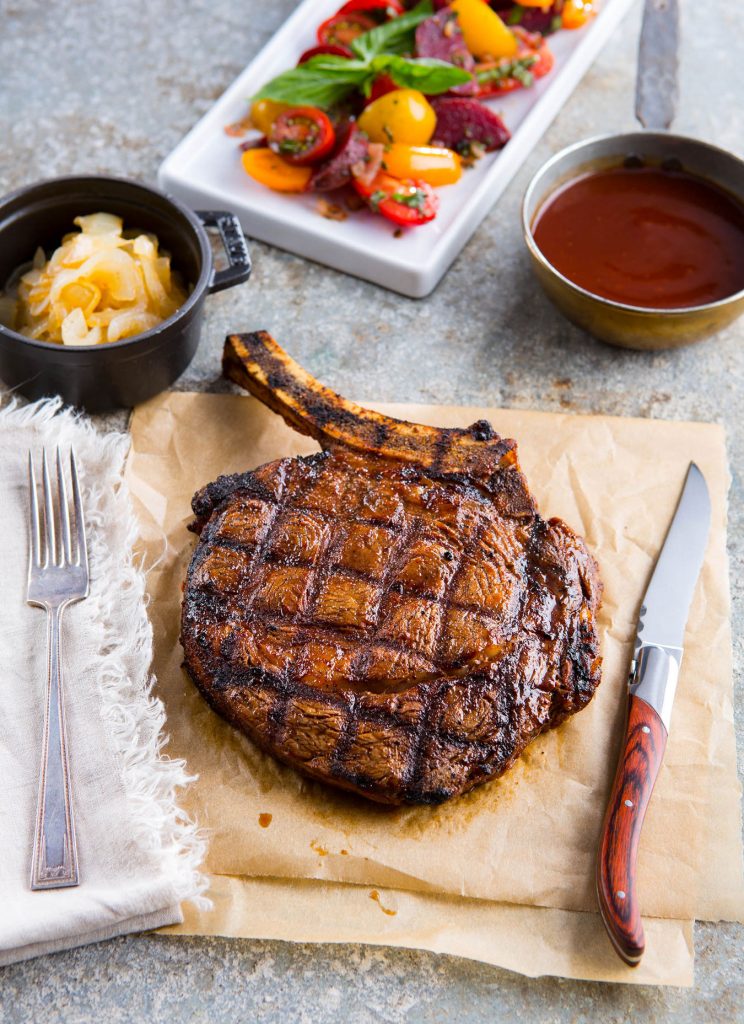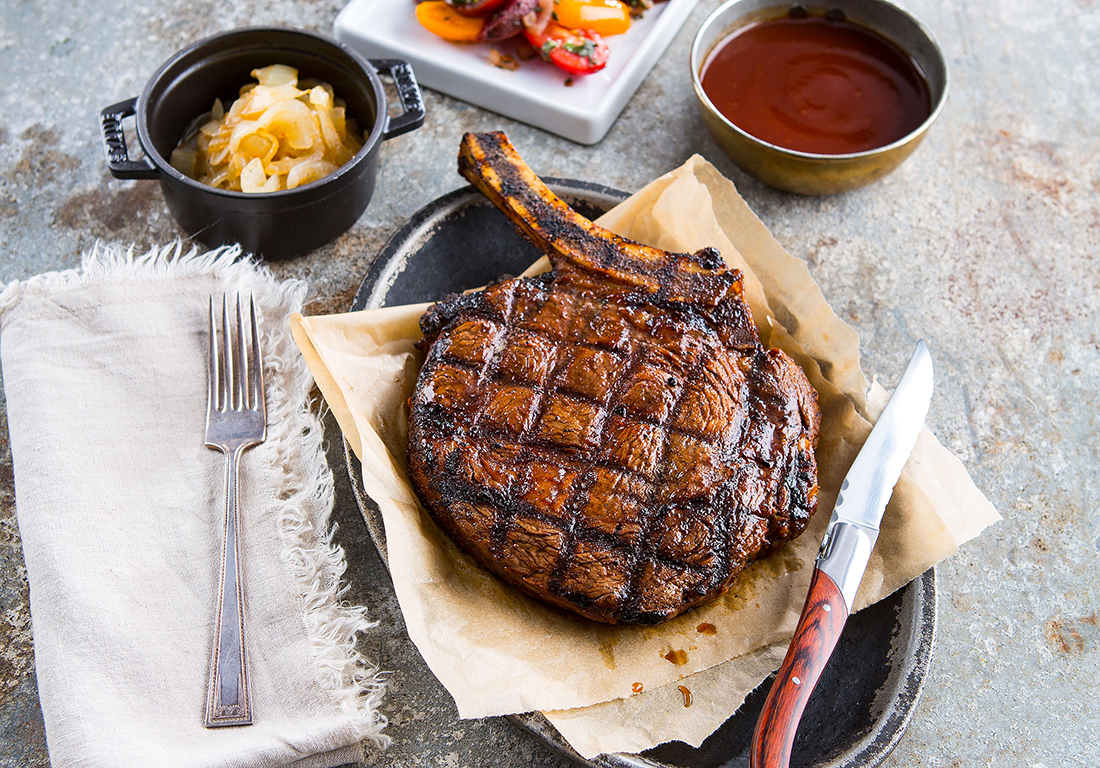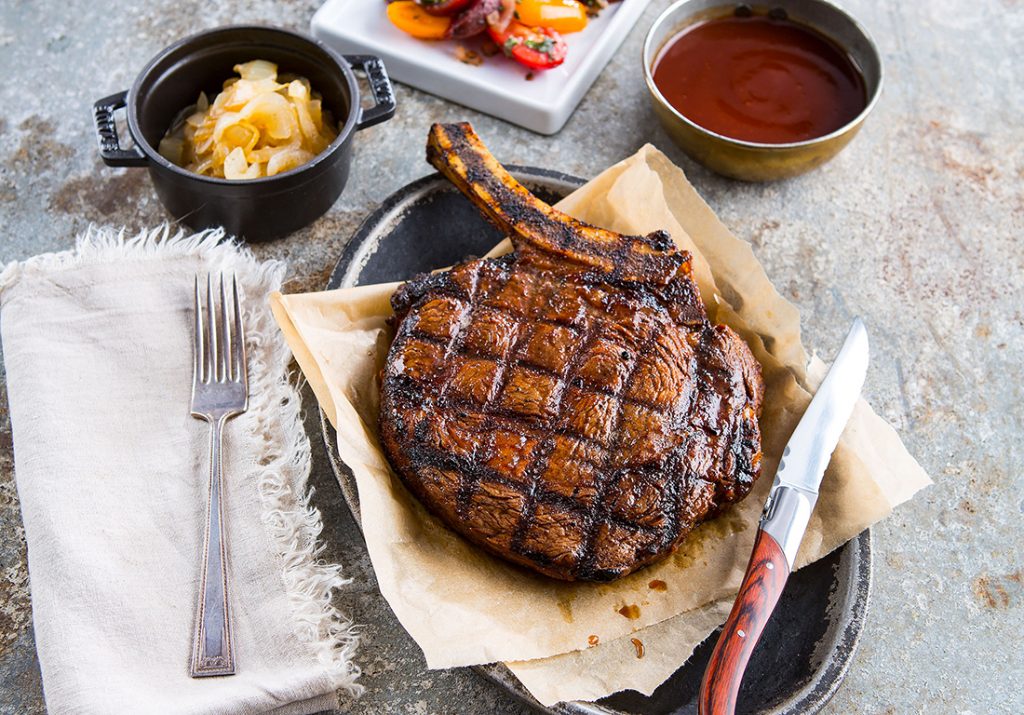You may have heard that you need to sear meat in order to seal in the juices.
Sadly, that’s a barbecue myth we need to bust.
Searing meat doesn’t create an impermeable barrier that prevents the release of natural juices when cooking or slicing a steak or other cut of meat. But that doesn’t mean you should abandon searing altogether.
You should always consider searing steaks before grilling, baking, braising, roasting, or sautéeing.
How Searing Works
Searing caramelizes sugar and browns present in the meat (in what is known as the Maillard reaction) to develop a more appealing color and flavor.
The moisture on the surface of the meat evaporates due to the high heat of the grill or pan. That’s when the intoxicating smell of roasting meat hits your nose. In short, the sear is why food looks appetizing in person and on Instagram.
To start, remove steak from refrigerator at least 30 minutes before grilling.
Remove excess moisture from the surface of the meat by patting it dry with a paper towel.
Apply a drizzle of olive oil to steak and liberally season the meat with a rub of choice. With a ribeye or strip steak, give our Texas Bold Brisket Rub a try for a flavor boost of black pepper, garlic, salt, and other bold spices.
Top 3 Methods to Searing Steaks Before Grilling
Grill and Sear
- Preheat grill 400 to 450°F.
- Sear each side for approximately 2 minutes. Flip no more than 2 times to produce a mouthwatering crust and those grill marks everyone loves.
- Use an instant-read thermometer to accurately gauge temperature and doneness. The internal temperature should register 125°F for medium-rare or 135°F for medium, taking about 2 minutes total on the hot section of the grill. For steaks less than an inch thick, cook them entirely over the hot side until a good crust forms.
The steaks will be about medium rare.

Pan Sear
Cooking indoors?
Use a sizzling hot iron skillet or pan with a thick base over high heat in a well-ventilated kitchen.
- Lightly coat the pan with vegetable oil.
- Place the well-seasoned steak into the hot skillet. Cook until a noticeable brown crust forms. The time will vary depending on the meat’s thickness.
- At this stage, restaurant chefs typically flip the steak in the skillet and finish cooking it by placing the skillet in a hot oven. At home, simply flip the steak and continue cooking for approximately 1-2 minutes to desired doneness. Use an instant-read thermometer to gauge temperature.
Reverse Sear
This popular technique reverses the steps to produce a juicy, tender steak.
- Bake a thick steak in the oven at 275°F and cook until the internal temperature reaches about 100°F.
- Finish the steak with a pan sear to yield a brown crust and cook to desired doneness.
The gentle baking process helps retain juiciness, enables even cooking from center to edge, and reduces the risk of overcooking, while the final searing produces the flavor we crave.



